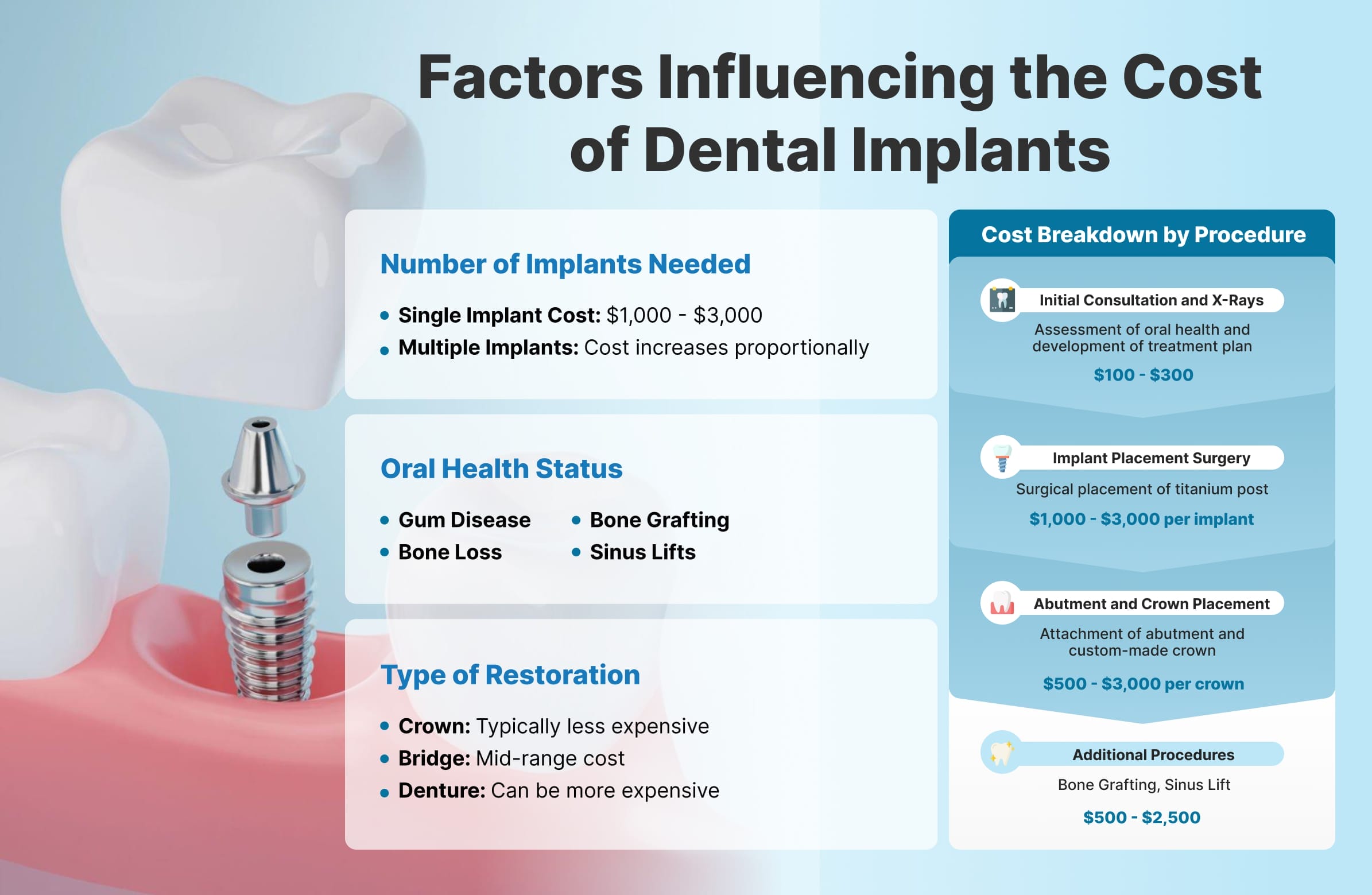The Ultimate Guide To Dental Sense
Table of ContentsDental Sense for DummiesThe Best Strategy To Use For Dental SenseThe Basic Principles Of Dental Sense The Dental Sense PDFs
are clinical devices operatively dental implanted into the jaw to recover a person's ability to eat or their look. They offer support for artificial (phony) teeth, such as crowns, bridges, or dentures. When a tooth is shed as a result of injury or condition, an individual can experience problems such as quick bone loss, faulty speech, or changes to eating patterns that cause pain.Dental implant systems consist of an oral implant body and dental implant abutment and might likewise consist of an abutment fixation screw. Dental veneers cost. The oral implant body is operatively placed in the jawbone instead of the tooth's origin. The dental implant joint is usually connected to the dental implant body by the joint addiction screw and expands through gum tissues right into the mouth to sustain the connected man-made teeth
(https://anyflip.com/homepage/wpqva#About)Structure of The Dental Implant System picking oral implants, speak with your oral service provider about the potential benefits and dangers, and whether you are a prospect for the procedure. Things to think about: Your overall wellness is an important aspect in identifying whether you are an excellent candidate for oral implants, how much time it will take to recover, and the length of time the dental implant may stay in area.
Smoking cigarettes may affect the recovery procedure and lower the long-lasting success of the implant. The recovery process for the implant body may take a number of months or longer, throughout which time you typically have a momentary joint instead of the tooth. the oral implant procedure: Thoroughly adhere to the dental hygiene guidelines offered to you by your oral service provider.
All about Dental Sense
Implant failure can lead to the need for one more operation to deal with or change the dental implant system. Restores the ability to chew Brings back cosmetic look Assists keep the jawbone from diminishing because of bone loss Preserves the health of the bordering bone and gums Helps keep nearby (neighboring) teeth secure Boosts quality of life Damages to bordering natural teeth during implant positioning Injury to the surrounding tissues throughout surgery, such as sinus perforation Injury during surgical treatment (for instance, crack of bordering jawbone) Inadequate feature, such as really feeling like the teeth do not bite with each other generally A sensation that the tooth hangs or twisting in position arising from a joint screw loosening Implant body failure (looseness of the dental implant body) due to systemic infection, which may be much more likely in patients with unrestrained diabetes mellitus due to regional infection in bone and gums sustaining the implant body as a result of delayed recovery, which might be extra likely in people that smoke Problem cleaning the gum tissues around the dental implant, causing poor oral hygiene Neglected periodontal illness Post-surgical numbness because of nerve impingement or damages Constantly alert health treatment service providers and imaging professionals that you have dental implants before any magnetic vibration imaging (MRI) or x-ray procedures.
FDA is not familiar with any type of adverse events reported for MRI or x-ray procedures with dental implants. Dental implants systems are generally made of products that follow international agreement requirements of the International Company for Standardization (ISO) or ASTM International. These standards have information of what makes a risk-free product.

An oral implant is a framework that replaces a missing tooth. With screw-like devices, the specialist inserts an implant into the jawbone, and it functions as an anchor for an artificial tooth, called a crown. A tool called a joint links the man-made tooth to the dental implant. The crown is custom-made to fit the person's mouth and match the color of their teeth.
A Biased View of Dental Sense
Some people are not eligible for oral implant surgical procedure. It is for dental surgeons to run on people with: severe illnessuncontrollable metabolic diseasebone or soft cells disease or infectionIf these concerns are solved, a person can have the surgical procedure. In, oral doctors refrain from operating people with: If people with any one of the above undertake dental implant surgical procedure, there is a greater threat of the implant stopping working.

Oral dental implant surgical treatment is an individualized process. It's not the same for every person. However the complying with provides a general review of what you can expect your dental practitioner, dental specialist, periodontist or prosthodontist to do: Position the implant surgically. Give you time to heal. Affix the post and final crown, bridge or denture.
Next off, your surgeon will thoroughly position the dental implant right into your jaw. If your dental implant is near the front of your mouth, your dental expert will certainly make a short-term tooth for you to use until you heal.
Some Known Factual Statements About Dental Sense
Throughout the healing stage, your jawbone must fuse to the oral implant. This procedure can take anywhere from 3 to nine months.
Once your dental implant heals, your dental practitioner can affix the joint (little port post) and your last restoration (crown, bridge or denture). This usually takes concerning one hour to finish and might call for a 2nd small surgery. You should not really feel any type of discomfort throughout your dental implant treatment since your supplier will certainly make use of medicine to numb your periodontals.